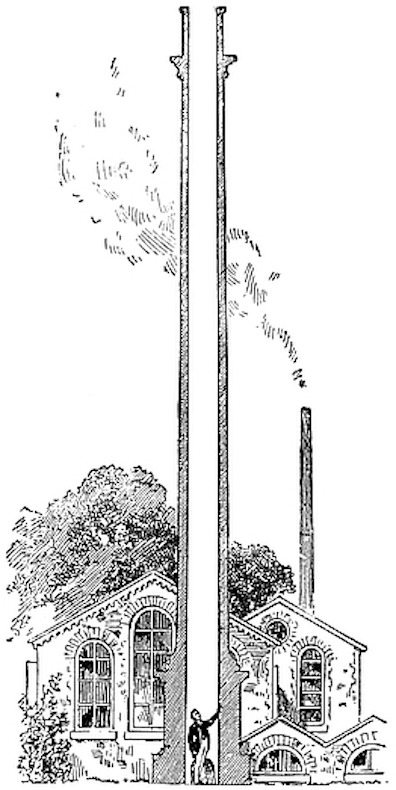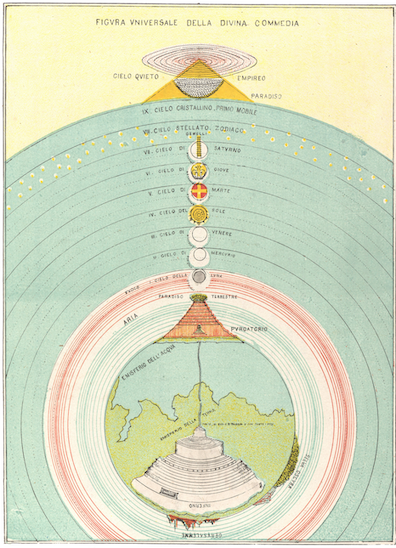Slote, Mamigonian, and Turner note that "Aristotle claimed in
the De Generatione Animalium that stars could be seen
in the daytime if an observer were placed at the bottom of a
deep shaft or well (708b21)." After remarking that various
people have disproved the idea, starting with Robert Hooke in
the 17th century, they quote from chapter 20 of the
Pickwick Papers, arguing that Joyce's
passage "follows from" one in which Dickens describes four men
"catching as favourable glimpses of heaven's light and
heaven's sun, in the course of their daily labours, as a man
might hope to do, were he placed at the bottom of a reasonably
deep well; and without the opportunity of perceiving the stars
in the day-time, which the latter secluded situation affords."
The Dickens passage predicts Joyce's only vaguely. A
statement of the idea by Sir Robert Ball, noted by
Harry Manos in "Physics in James Joyce's Ulysses,"
The Physics Teacher 60 (1922): 6-10, does so much more
precisely. In Lestrygonians Bloom calls Ball's Story
of the Heavens (1886) that "Fascinating little book,"
and Ithaca reveals that it sits on his bookshelf. In a
passage of his later book Starland (1899), Ball claims
that stars can be seen in daylight, after imagining a quite
long hole in the earth:
These groups of stars extend all around the sky.
They are not only over our heads and on all sides down to the
horizon, but if we could dig a deep hole through the
earth, coming out somewhere near New Zealand, and if we
then looked through, we should see that there was another
vault of stars beneath us. We stand on our comparatively
little earth in what seems the centre of this great universe
of stars all around. It is true we do not often see the
stars in broad daylight, but they are there
nevertheless. The blaze of sunlight makes them invisible. A
good telescope will always show the stars, and even without a
telescope they can sometimes be seen in daylight in
rather an odd way. If you can obtain a glimpse of the blue sky
on a fine day from the bottom of a coal pit, stars are often
visible. The top of the shaft is, however, generally
obstructed by the machinery for hoisting up the coal, but the
stars may be seen occasionally through the tall chimney
attached to a manufactory when an opportune disuse of the
chimney permits of the observation being made (Fig. 24).
The fact is that the long tube has the effect of completely
screening from the eye the direct light of the sun. The eye
thus becomes more sensitive, and the feeble light from the
stars can make its impression, and produce vision. (59-60)
Ball's thought experiment of a hole bored all the way through
the earth is followed by a more pragmatic claim that stars can
be seen in daytime from coal mines and factory chimneys. But the
more extravagant idea offers a suggestive context for Bloom's
impossibly long "vertical shaft," and Ball's use of the words "
daylight"
and "
shaft" confirm that
Starland must be Joyce's
primary source.
I do not know of any inspiration for Bloom's length of nearly
one mile, but the idea of such a long shaft descending "from
the surface towards the centre of the earth" does appear
in one famous literary work. The Divine Comedy
pictures the earth as holding land in the northern hemisphere
and water in the southern, with Jerusalem in the former
diametrically opposed to the purgatorial mountain in the
latter. Along one half of this immense diameter lies a tunnel
through which Virgil and Dante climb from the earth's center
back to the surface in the final canto of the Inferno.
Its length, according to Dante's own science, would be more
than 3,000 miles, but he does not dwell on the impossibility
of covering all this ground in the short time he gives his
character. He merely shows himself arriving at a point close
enough to the surface to glimpse the stars through a pinprick
in the earth's crust:
we climbed up, he first and I behind him,
far enough to see, through a round opening,
a few of those fair things the heavens bear.
Then we came forth, to see again the stars. (34.136-39)
As Joyce surely knew, Ball's fancy of a tube bored from
Britain to New Zealand finds a remarkably close analogue in
Dante's plumb line from Jerusalem to Purgatory, and both
writers imagine gazing from such a tube through a round
aperture (un pertugio tondo). Readers who feel inclined
to dismiss the correspondences as merely coincidental should
consider what happens immediately before this in Ithaca.
Just as Virgil leads Dante out of the darkness of Hell via a
tunnel, "he first and I behind him," Bloom leads
Stephen out of the darkened "house of bondage" on Eccles
Street into his back yard via a hallway and a "door of
egress": "first the host, then the guest, emerged silently,
doubly dark, from obscurity by a passage from the rere of
the house into the penumbra of the garden." Dante passes
from the darkness of Hell to the starlit surface of the earth
where he and Virgil behold "those fair things the heavens
bear." Bloom and Stephen––"doubly dark," because both
are dressed in black––go out into the shadowy garden to behold
"The heaventree of stars."
These echoes of Dante are quite precise (though no one has
ever noticed them until now), and they are reinforced by
others. As the two men exit the house Stephen chants the first
verse of Vulgate Psalm 113 (114 in other versions of the
Bible) in modus peregrinus––details that evoke the beginning
of Purgatorio as Dante puts the "house of
bondage" behind him and begins the next phase of his journey.
"Heaventree" loosely suggests the celestial architecture
through which Dante ascends to God in Paradiso. Three
paragraphs after this word, Bloom's fancy of human beings
living on the seven planets of the solar system much more
exactly echoes the seven spheres of the solar
system (the first of nine celestial spheres) in that
poem. Joyce's dense clustering of Dantean allusions in this
part of Ithaca suggests a deliberate and intricate
intertextual design.


